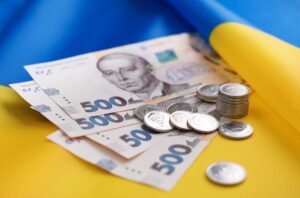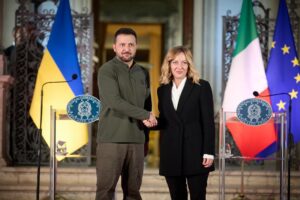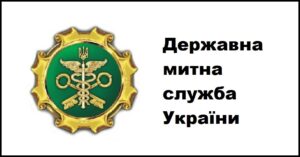
According to information published in the Ukrainian media, former Secretary of the National Security and Defence Council (NSDC) of Ukraine Oleksandr Litvinenko may become the next Ukrainian ambassador to Serbia. This was reported by Verkhovna Rada deputy Oleksiy Goncharenko on his Telegram channel, citing sources in the presidential administration.
It is reported that Vladimir Zelensky will soon approve Litvinenko’s appointment to the diplomatic mission in Belgrade by decree.
There has been no official confirmation from the Office of the President or the Ministry of Foreign Affairs of Ukraine yet.
Oleksandr Valeriyovych Litvinenko, born on 27 April 1972 in Kyiv, is a Ukrainian statesman and public figure.
Education: graduated from the Institute of Cryptography, Communications and Informatics of the Russian FSB Academy (1994), received academic degrees in Kyiv and London.
He began his career in the Security Service of Ukraine (1994–1998), then held positions in the National Security and Defence Council, the Security Service and the National Institute for Strategic Studies.
In 2021–2024, he headed the Foreign Intelligence Service of Ukraine.
On 26 March 2024, by presidential decree, he became Secretary of the National Security and Defence Council, holding this position until July 2025, after which he was dismissed.
Litvinenko is a Doctor of Political Science, professor, major general, and Honoured Worker of Science and Technology of Ukraine.
According to Volodymyr Zelenskyy, Litvinenko is ‘a professional with an excellent reputation,’ and he himself is a key figure in the formation of diplomatic strategies.
It is expected that after the decree is signed, the appointment will be sent to the Serbian Assembly for approval. If the candidacy is approved, Alexander Litvinenko will head the Ukrainian diplomatic mission in Belgrade.
The main task is to strengthen bilateral political and economic dialogue, strengthen Ukraine’s position in the Balkans and promote European integration.
The appointment of Oleksandr Litvinenko as Ukraine’s ambassador to Serbia reflects Kyiv’s desire to strengthen its diplomatic presence in the Balkans. His experience working in the National Security and Defence Council, the Foreign Intelligence Service, and strategic institutions makes him a strong candidate for strengthening Ukrainian-Serbian relations.

This amount of revenue is UAH 37.6 billion, or 13.4% more than in the same period of 2024. Among the main budget-forming goods that provided the largest revenues in January-June 2025, the following are in the lead:
– petroleum products – UAH 71.1 billion;
– passenger and freight vehicles – UAH 30.3 billion;
– petroleum gases – UAH 9.3 billion;
– mineral fertilizers – UAH 6.8 billion;
– fungicides, herbicides – UAH 6.0 billion;
– telephone sets – UAH 4.1 billion;
– cigars, cigarillos, and cigarettes – UAH 4.0 billion;
– coal – UAH 3.9 billion.
The main budget-forming goods, whose import growth ensured a significant increase in customs revenues in the first half of this year compared to the same period last year, were:
– petroleum products – by UAH 8.2 billion;
– petroleum gases – by UAH 4.8 billion;
– passenger cars – by 3.7 billion UAH;
– cigars, cigarettes, cigarillos – by 3.2 billion UAH;
– coal – by 2.3 billion UAH;
– agricultural machinery and equipment – by 1.1 billion UAH;
– electricity – by 1.1 billion UAH.
In turn, customs revenues were affected by a steady increase in the share of customs duties assessed on the import of certain goods into Ukraine in accordance with the legally approved list of exemptions. Thus, the total amount of customs duty exemptions on imports of goods in January-June of this year amounted to UAH 140.12 billion, which is 42% or UAH 41.61 billion more than in January-June 2024.

NAEK Energoatom and Holtec International signed an agreement on the margins of URC-2025 in Rome, which provides for the construction of a plant for the production of small modular reactors (SMR) and spent nuclear fuel (SNF) containers using Holtec technology, Energoatom head Petr Kotin said.
“The agreement with Holtec is also a forward-looking agreement. It fixes what we plan to do with them. This is a plant to produce SMRs in Ukraine using their technology. They also transfer to us the technology of production of SNF containers,” Kotin said in comments to Interfax-Ukraine after signing the document.
He recalled that Holtec technology was used to build the Centralized Spent Nuclear Fuel Storage Facility (CSNFSF), which constantly needs new containers for it.
“Containers are needed all the time for spent fuel. They are now produced in the United States, and later we will produce them in Ukraine. It will be cheaper,“ – explained the head of ”Energoatom”.
As reported, Energoatom and Westinghouse on the margins of URC-2025 in Rome finalized agreements on the production in Ukraine of nuclear fuel using the technology of the American company.
“We signed a memorandum that consolidates everything that has already been done with Westinghouse (…). And this was just the summarizing part of the documents,” Kotin said in comments to Interfax-Ukraine after signing the memorandum.
Ukraine has not bought nuclear fuel from Russia since 2020 and has also refused to buy spare parts for nuclear reactors.
In June 2022, Energoatom and Westinghouse signed an agreement to supply nuclear fuel for all Ukrainian nuclear power plants.
The CCNF is an autonomous nuclear facility designed for long-term storage of spent nuclear fuel from the Pivdenno-Ukrainian, Khmelnytsky and Rivne NPPs, which until 2021 was exported to Russia for storage and reprocessing, costing Ukraine about $200 million annually. Fuel from these NPPs was supposed to be received by the Central Nuclear Fuel Storage Facility from April 2022, but the war corrected these plans, and the fuel was stored at the plants themselves until 2023, when its pilot operation began.

Italy is interested in investing in Ukraine and is ready to invest resources without delay, sign agreements, and provide financial guarantee instruments for companies that plan to invest in Ukraine’s reconstruction measures, Italian Prime Minister Giorgia Meloni says.
“Italy, as a country, is also ready to contribute and start now and rebuild what was destroyed – roads, bridges, hospitals, all these buildings,” Meloni said at the Ukraine Recovery Conference (URC2025) during a joint statement with Ukrainian President Volodymyr Zelensky to reporters in Rome on Thursday.
She noted that Italy has already taken Odessa under its patronage to restore cultural and heritage objects. “And we want to even go further, we want to expand our contribution: this is energy, critical infrastructure, transportation, agriculture, also health care. Of course, I won’t list all the initiatives now, but I want to remind you that we are doing a lot of things that are symbolic in terms of humanitarian aid,” the head of the Italian government said.
Meloni also noted that Italy will help in the heroic resistance to Ukraine. “We have done it in different senses and we will also do it on industry and also defense sector and cooperation. We have also talked about this, and this is evidenced by a number of agreements signed today, this is a central theme. And, of course, we will continue our investments, because we understand how important it is to do everything possible so that Ukraine can fight, fight back, defend itself,” she said.
According to the Italian Prime Minister, peace in Ukraine should be “long, lasting, just”, in particular through deterrence.

In 1,780 cases of violation of customs rules, the objects of offenses worth almost UAH 370 million were temporarily seized. In particular:
– industrial goods worth UAH 213 million
– vehicles worth over UAH 122 million
– foodstuffs worth over UAH 33 million;
– currency worth UAH 2.2 million.
In 899 cases of customs rules violations, including those initiated in previous periods, customs applied administrative penalties in the form of fines amounting to UAH 31 million, and collected UAH 31 million to the state budget, taking into account cases considered in the previous period. The customs authorities submitted 2,689 cases of customs rules violations worth over UAH 5.5 billion to the courts. As a result of court proceedings, including those initiated in the previous periods, penalties (confiscation of goods and fines) amounted to UAH 2.5 billion.